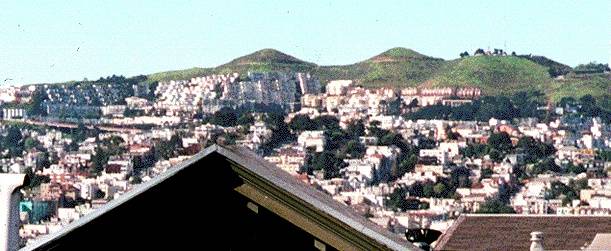Twin Peaks: Difference between revisions
New page: Image:sunset$twin-peaks-photo.jpg |
m Removed protection from "Category:Twin Peaks": user would like to add to this page |
||
| (4 intermediate revisions by 3 users not shown) | |||
| Line 1: | Line 1: | ||
[[Category:Neighborhood/Geography]] | |||
[[Image:sunset$twin-peaks-photo.jpg]] | [[Image:sunset$twin-peaks-photo.jpg]] | ||
''Text partially excerpted from 'The District Handbook: A CORO Foundation Guide' | |||
The Twin Peaks area did not have the proximity to downtown of Nob or Telegraph hills, and therefore it was essentially unoccupied until after World War II. The Laguna-Honda Hospital predates all other buildings in the area. It was originally placed there specifically because its isolation would protect the San Franciscans from the chronic diseases of the poor treated there. It was also close to Laguna Honda, a natural lake. | |||
The Diamond Heights area was originally considered on maps as an extension of the Mission District street grid. During the 1950s, the area was one of the City's first redevelopment projects. Apartment complexes and single family dwellings were constructed with strict zoning which afforded maximum views. | |||
Latest revision as of 11:19, 29 August 2018
Text partially excerpted from 'The District Handbook: A CORO Foundation Guide'
The Twin Peaks area did not have the proximity to downtown of Nob or Telegraph hills, and therefore it was essentially unoccupied until after World War II. The Laguna-Honda Hospital predates all other buildings in the area. It was originally placed there specifically because its isolation would protect the San Franciscans from the chronic diseases of the poor treated there. It was also close to Laguna Honda, a natural lake.
The Diamond Heights area was originally considered on maps as an extension of the Mission District street grid. During the 1950s, the area was one of the City's first redevelopment projects. Apartment complexes and single family dwellings were constructed with strict zoning which afforded maximum views.
Pages in category "Twin Peaks"
The following 19 pages are in this category, out of 19 total.

